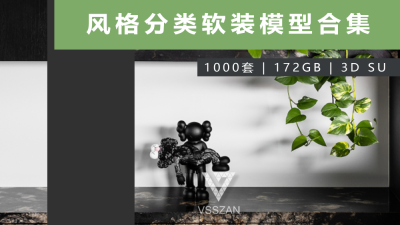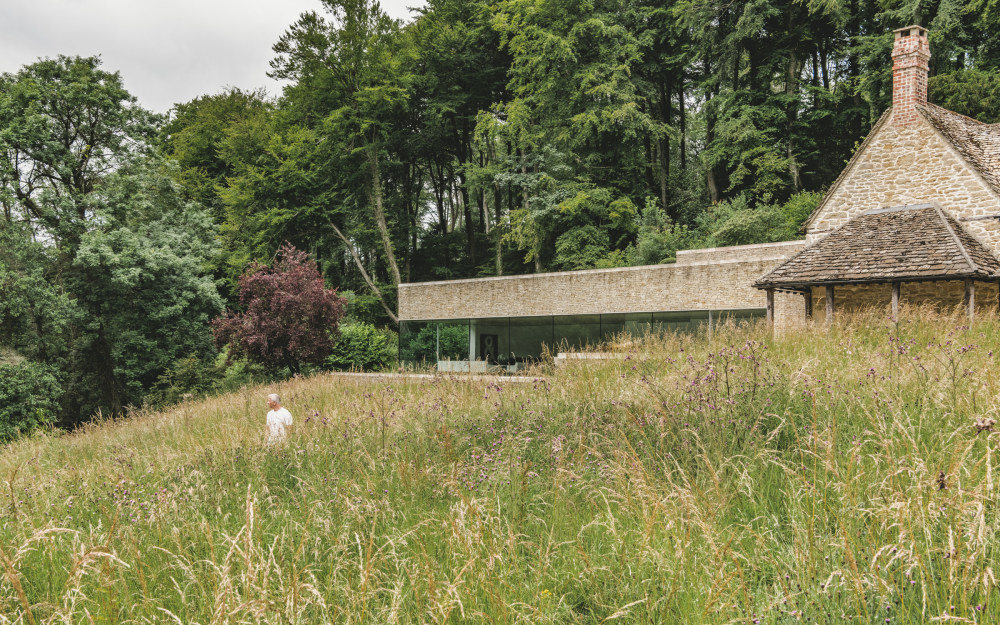

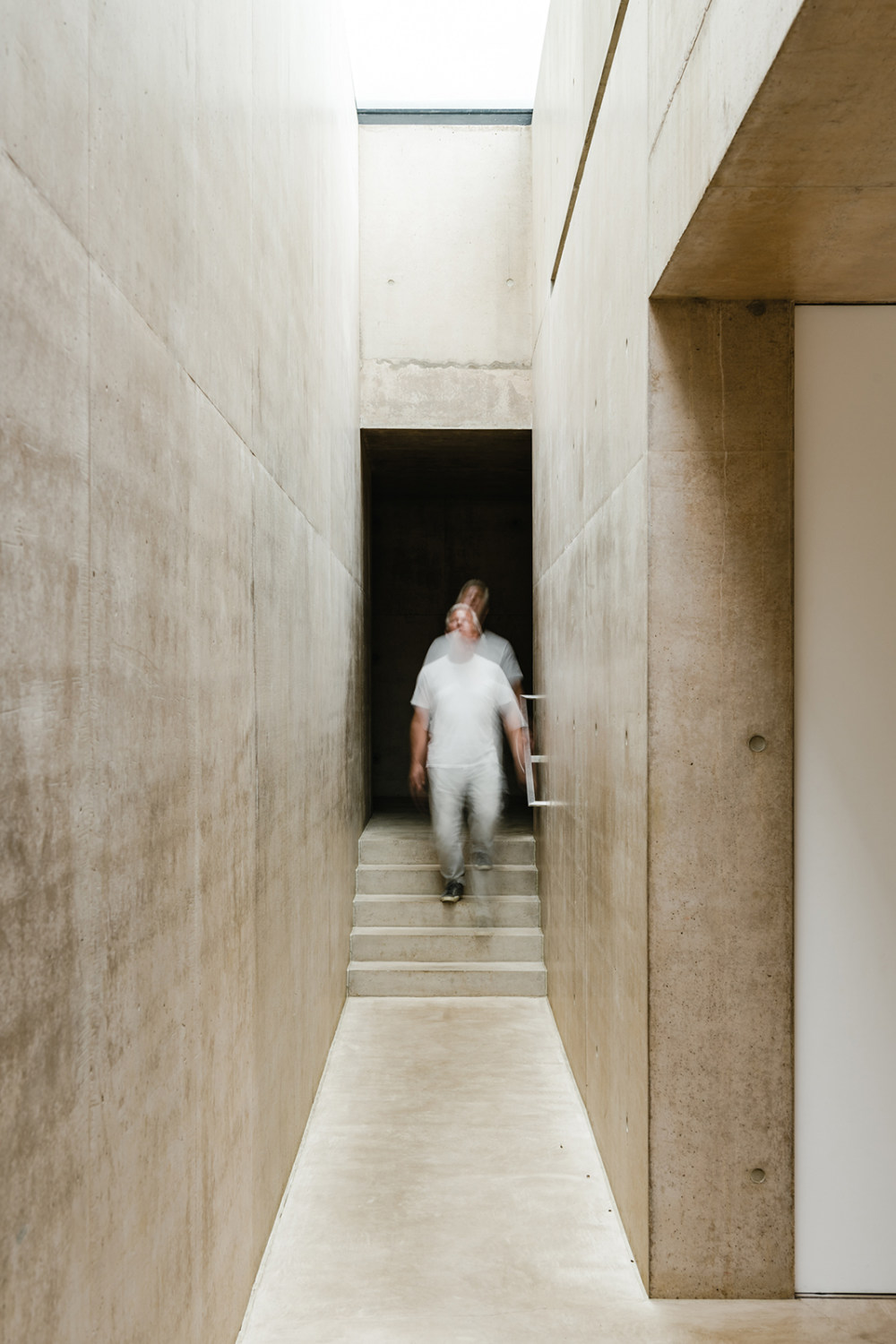
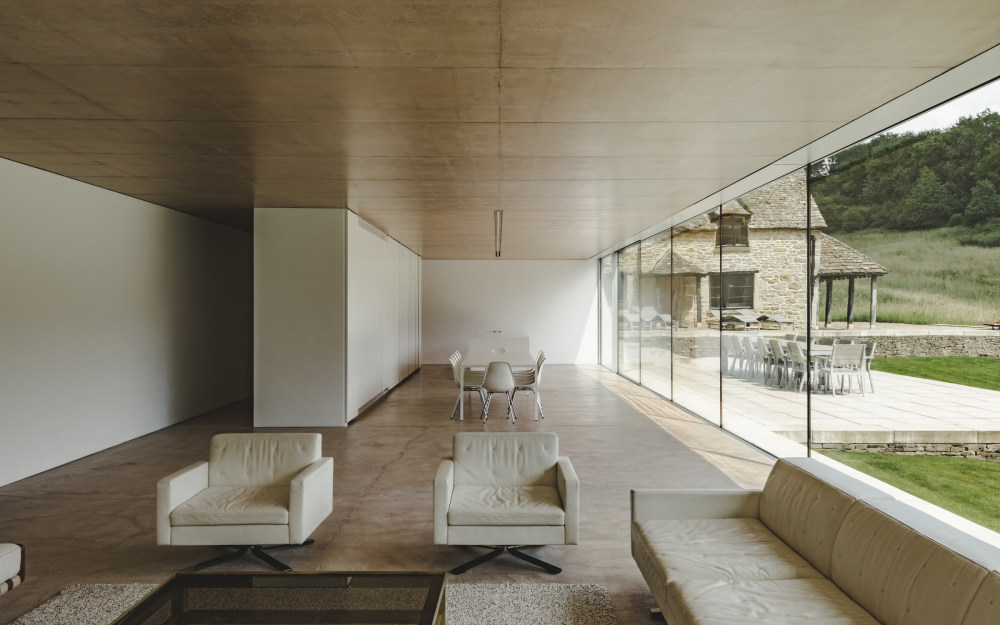
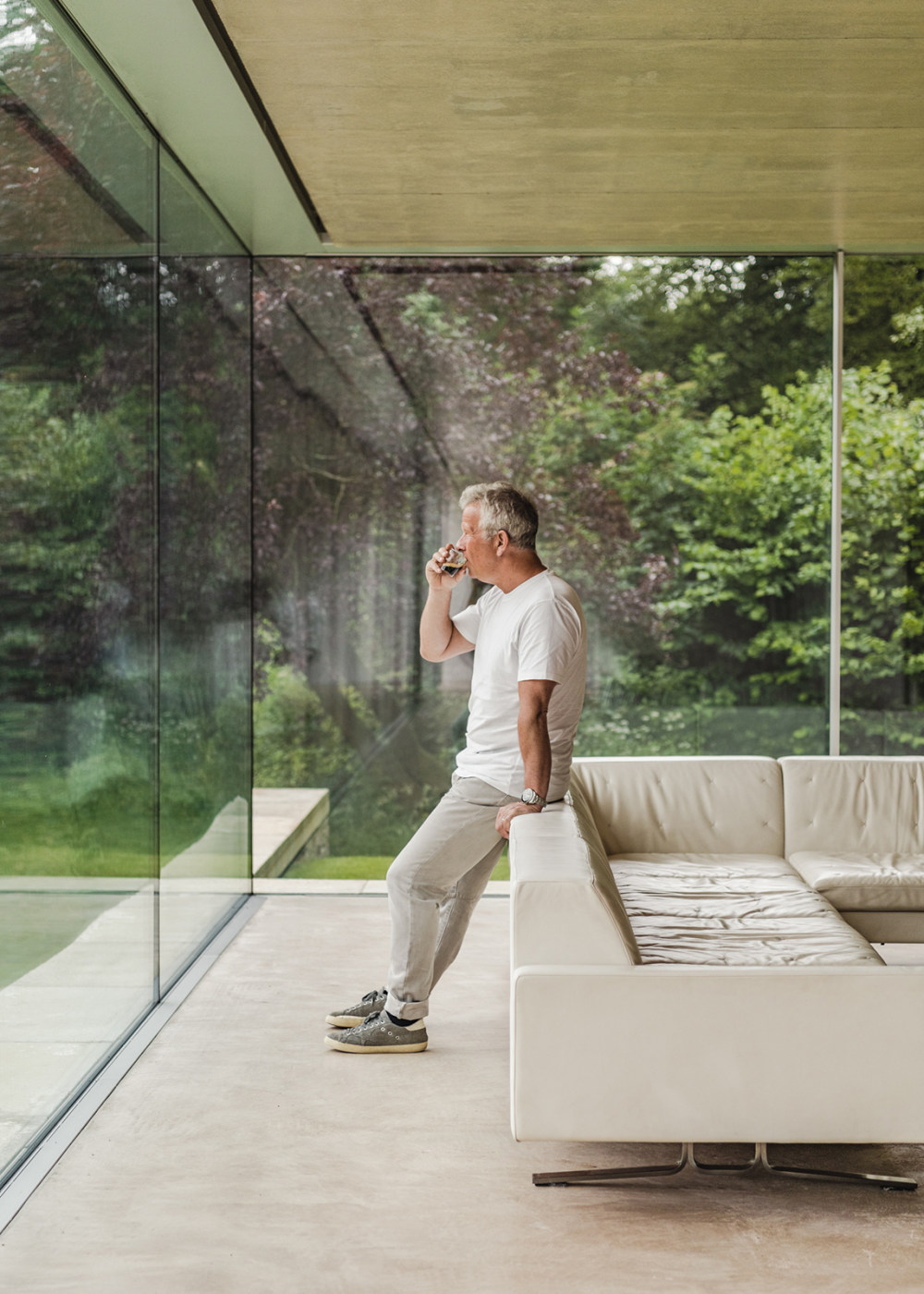
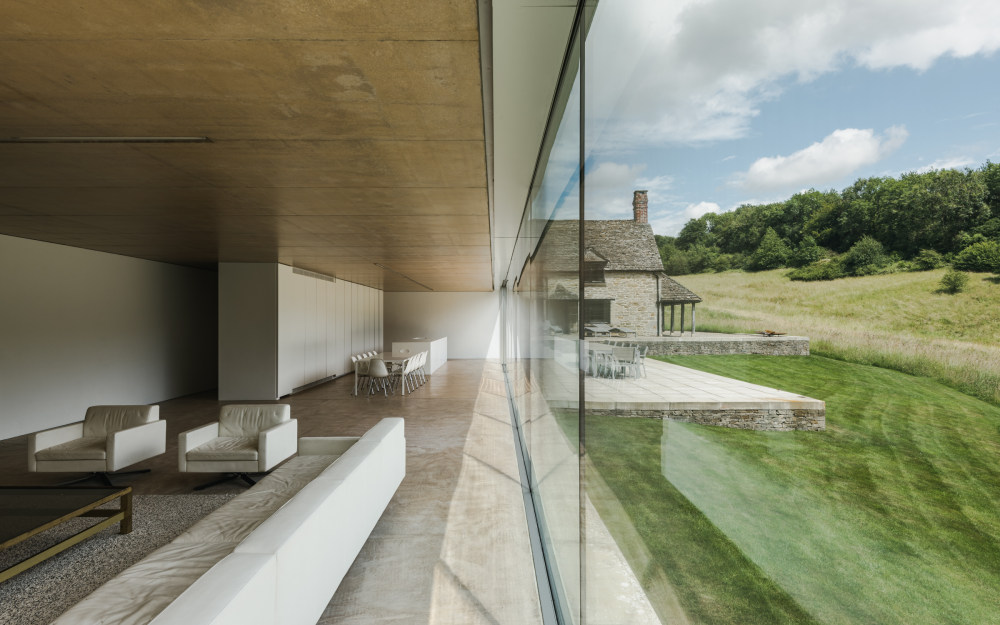


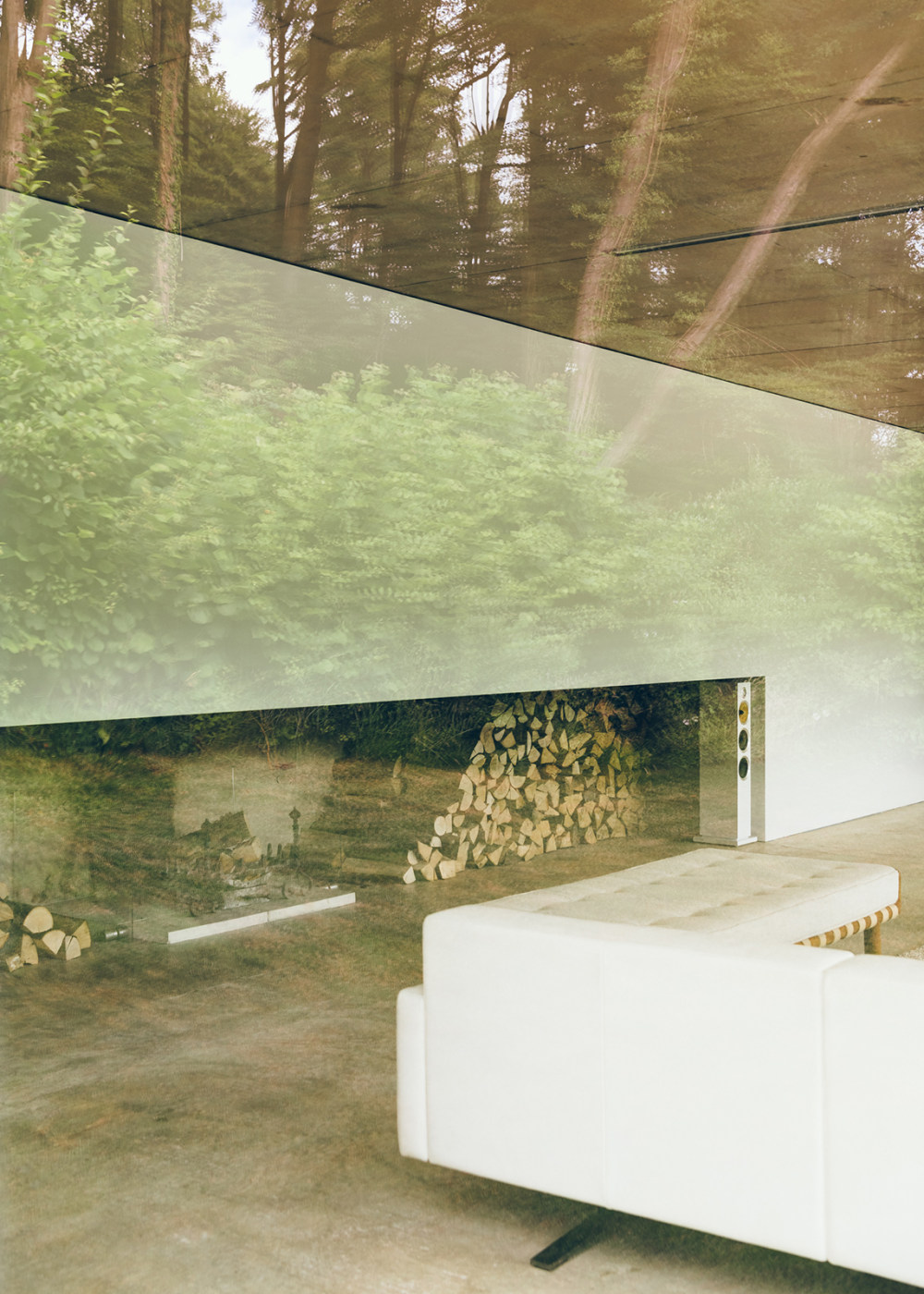
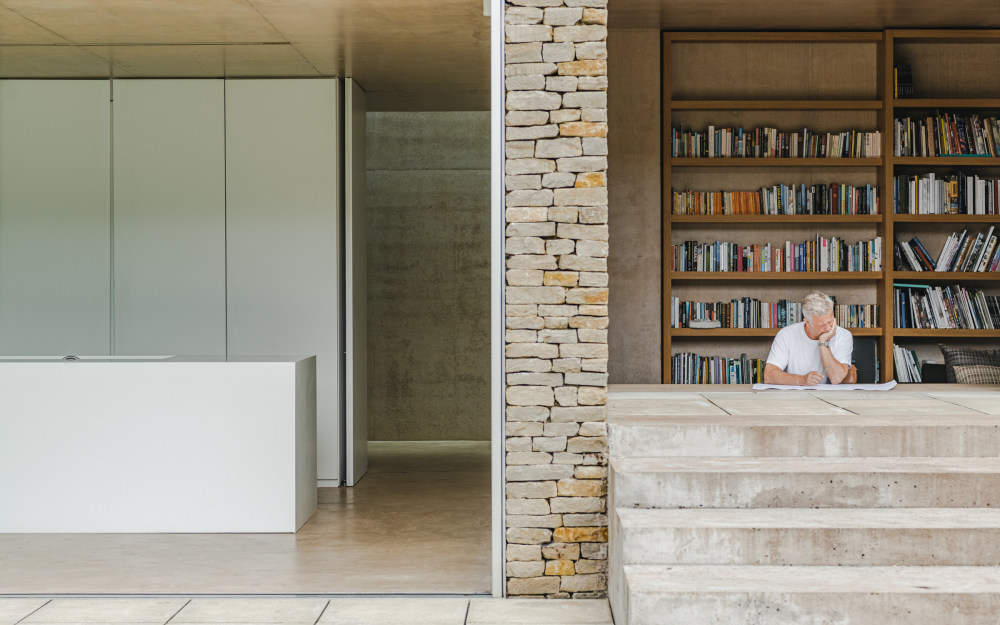
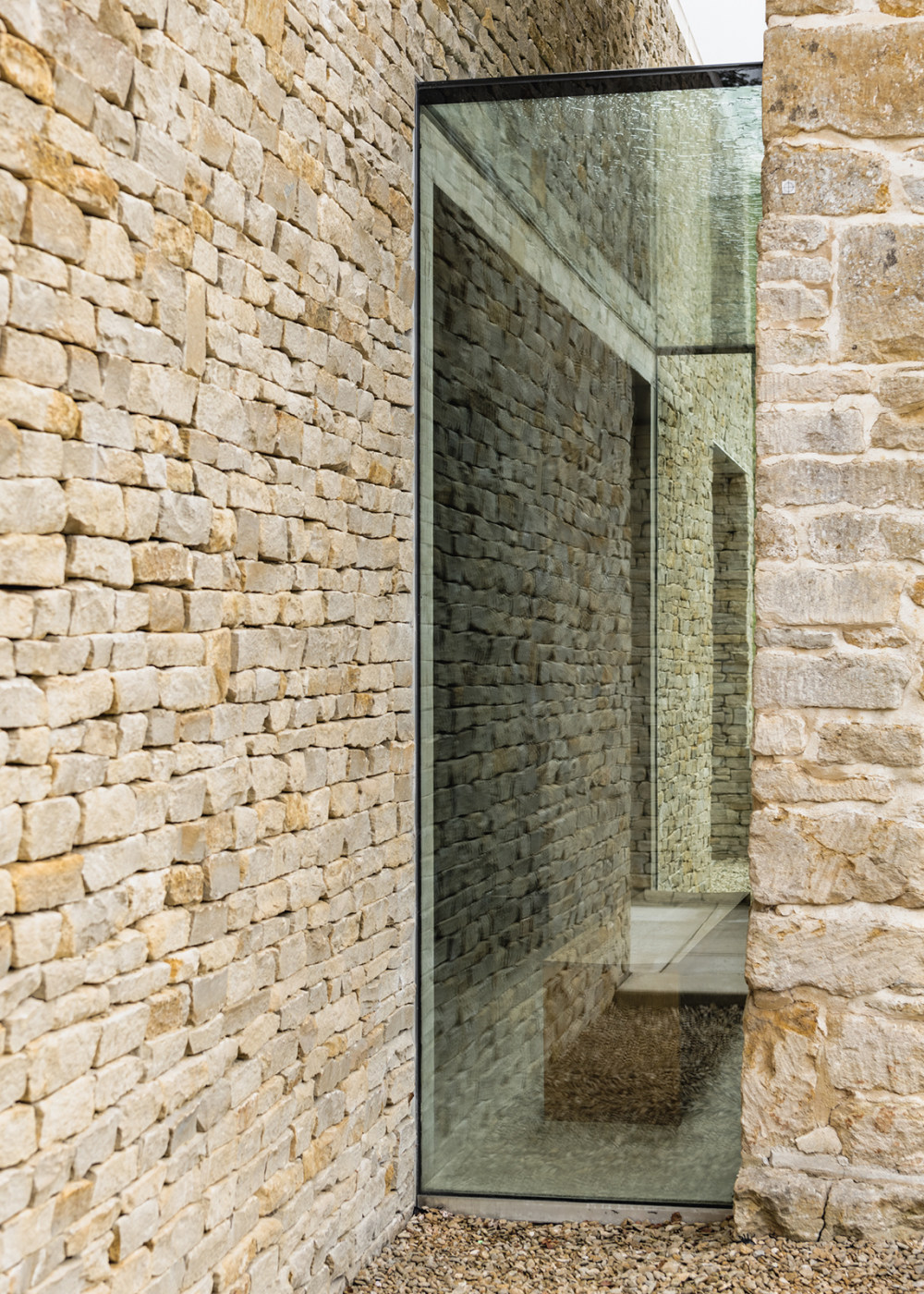

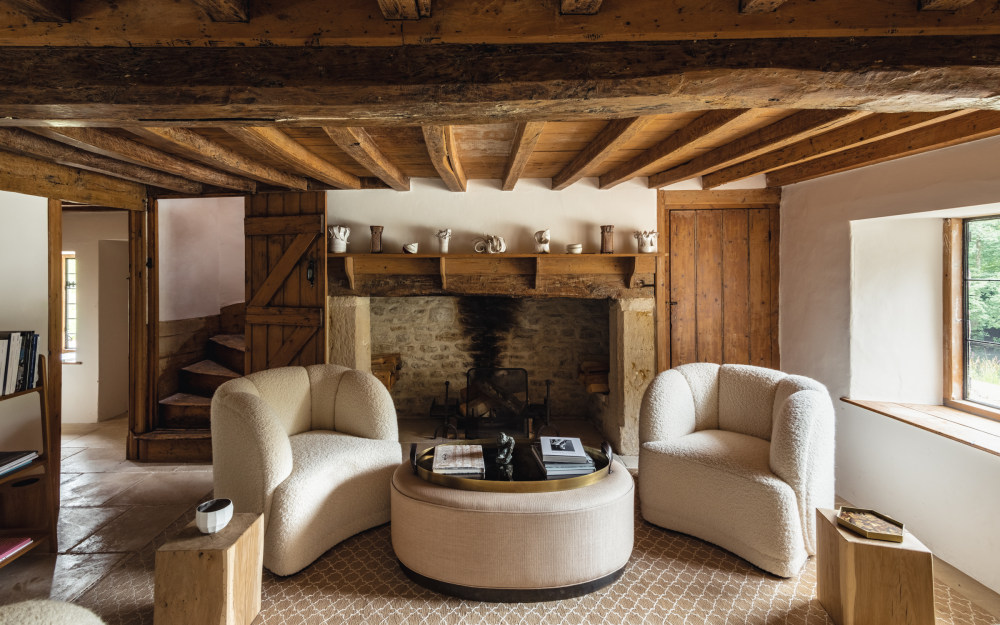

Nominative determinism, the idea that some people decide upon their careers based on the suitability of their names, finds a degree of substantiation in the case of Richard Found, head of architectural and interior practice, Found Associates. As anyone in the business will know, the trick is to find that perfect site – the overlooked distillery in a car park, the Victorian warehouse in a once-dodgy part of town, or a pebble-dashed pump station on the post-industrial expanse of Dungeness – that can, with creative vision, design know-how and a whole lot of patience, be turned into something else entirely.
At the site where his modern country home now sits, Richard found gold. In a quiet corner of the Cotswolds, a sequestered valley runs down to a lake, while a Grade II-listed, 18th-century gamekeepers cottage sits at one with the landscape, appearing almost as ancient as the woodland that surrounds it. Richard’s RIBA Award-winning extension did little to upset that harmony, being a stealthy flanking of the cottage, with swathes of local stone and glazing serving to at once pronounce the period vernacular while also being of minimal visual impact.
In the years since its completion, Richard has found more than a place to escape to at the weekend in his modern country house, discovering fresh inspiration for a new venture, Found Pop, which offers design-led furniture to pop-ups around the UK. Here, Richard reflects on the process of designing and building his house, the value having a retreat away from London has brought his family and why working on a startup mid-career has him energised.
Richard: “When you tell people you have a place in the Cotswolds, they imagine a crumbling old house full of cobwebs – they certainly don’t expect this. But when people come here, they feel like they’re in the Ibiza of the Cotswolds, and they certainly behave and enjoy themselves accordingly…
“It’s very much a party house and I have to say my 50th down here a couple of years ago was probably one of the best days of my life. We invited people for lunch and a lot of them left at 8.30am the following morning, which is a sign of a good time to me.
“I love the fact this house allows people to circulate freely and feel totally at ease. If we are entertaining clients, friends or family, we might start off by having drinks in the main living room on the first night, then we might head up to the roof later on to catch the last bit of sunlight. The next morning everyone comes down for breakfast, which we like to make an occasion of, and then on Sunday evening we take people into the cottage for card games.
“Utilising all those spaces at different times triggers different
emotional responses in people, but I also think it makes people more relaxed because
we’re not confined to one living area. I take great pleasure in seeing one of
our guests get up from the table to get something from the fridge without
asking because I know they feel comfortable and at home.
“My relationship with this house wasn’t always so relaxing, though! In fact, the process of building it was a living nightmare of sorts.
“It was 2007. We were looking for a place outside London and my wife had signed us up to a Cotswolds magazine, in which I spotted the listing for this place. I came down off the back of that picture and paid the deposit that day. It was just a derelict cottage with a load of ramshackle outbuildings, corrugated garages, chicken runs and an outside loo. It probably hadn’t been touched for 80 or 90 years.
What drew us in though was the lake and the feeling of privacy and tranquillity. I had been working relentlessly for many years, and I think my wife and I realised the benefits of having somewhere to escape the freneticism of London life, connect with nature and to spend time with our two children.
“I started designing a scheme that, wrongly, as I now see it, would have demolished the cottage and built a contemporary house in its place. Then came the planning fiasco. I got a call to say English Heritage had spot listed the cottage, essentially preventing me from making any real changes, and I had a very physical response to what I thought was the end of my world. I thought my life’s savings had been wasted on a dingy house with earth floors, no heating and not enough space for my family.
“After talking to them, we realised that the planners were just keen for the cottage to remain the dominant feature on the plot. That’s why, now, you never see the full expanse of the extension – it’s set back from and punctuated by the original so as to be respectful of it. We settled on totalling up the footage of all the outbuildings we demolished and used that as the maximum size of the extension, the design of which is geared to be as subtle as possible.
“Because I didn’t have carte blanche to do whatever I wanted, I think – and I know this sounds cheesy – the resulting outcome is an exciting dialogue between old and new. The modern extension might not have worked without the contrast of aesthetics and languages provided by the cottage, which we have furnished in a more homely, cosy way than the contemporary part of the house.
“When designing the extension, I became slightly obsessed with that feeling I got on my first ever visit here, of being totally immersed in nature, and I wanted to create something which would retain that response in the main living space. The 23-metre room has a continuous stretch of glazing, which was an expensive and complicated architectural move, but one whose alternative, of inserting a supporting column instead of cantilevering the whole structure, would have been a visual obstruction, ruining the view to the lake and woodland beyond.
“Wanting a lack of visual distractions extends to the interior space too, and I have to say I am a fully-committed minimalist. When I left college I lived in a bedsit in Putney, and I had one rail with seven white t-shirts and three pairs of very dark blue denim jeans, all exactly the same. I was probably eating mung beans and tuna three times a week, and dare I say I lived like a monk.
“I’ve adapted since then – mostly out of necessity owing to my wife’s love of cushions – but while I understand that behaviour is not totally normal, it does give me the space to think freely and creatively. I also think that to come into a space like this, when all you have to look at is nature, carries with it mental benefits.
“As I’m getting older, that sense of calm and clarity of thought I derive from being around nature is becoming more important. I mean, I’ve just set up a start-up at a time when some people in my position might be thinking about winding down, and I think that’s only been possible because of the mental state this house has allowed me to occupy.
“I was up here one weekend, thinking about whether I wanted my next 25 working years to be the same as the last, and decided I needed to hatch a new plan. While I love Found Associates and am still very much involved in it, I wanted a new challenge to keep me energised and focused.
“So I launched Found Pop, channelling my experience in the retail industry to create a design-led collection of customisable shop furniture, from fitting rooms to cash registers, that can be rented for a day or years, often in temporary spaces. It’s been so exciting and worthwhile to get my teeth stuck into a project like this at this stage in my career, and I love obsessing over it all, from the business model to the design of the products.
“I owe a lot to this house, which has given me and my family so much. For my son, it’s provided a tremendous amount of enjoyment and freedom, and the ability to switch off from the pressures of his school and social life, which can be terrible for young people.
“What has it given my daughter? Hay fever! She’s 16, so she’d rather be in some club in London or hanging out on a street corner. She hasn’t really discovered the house as a place to party with her mates yet, but that will be another headache…
“My wife and I, if I’m being really honest, have only started to really appreciate being by ourselves here in the last two years. The reason being that for so long it was almost like running a hotel! I don’t mean that negatively, we were just so excited to share it with everyone we could.
“Now, we’re entertaining less and if my wife and I come down just the two of us, we’re in heaven. We sunbathe, read, watch stuff without our children dictating and just generally slow down. It’s grounding, and makes us both appreciative of what we’ve created here.”
Richard, how do you define modern living?
The successful integration of different peoples needs in one space. The formal, separate dining room is no longer required in peoples homes today. Hosts can talk to their friends whilst they are preparing dinner (which, actually, is not always welcomed due to the level of concentration I require to not burn a chicken!). We have purposely not installed a TV in the main living space. Conversation, laughter, dancing and Sunday papers rule here!
Is there a home for sale on The Modern House that has caught your eye? Why?
The Martello Tower for its isolation, individuality and integrity.
- 转载自:The Modern House
- 语言:English
- 阅读原文
|

 发表于 2020-8-4 00:53:12
发表于 2020-8-4 00:53:12
















 已绑定手机
已绑定手机
